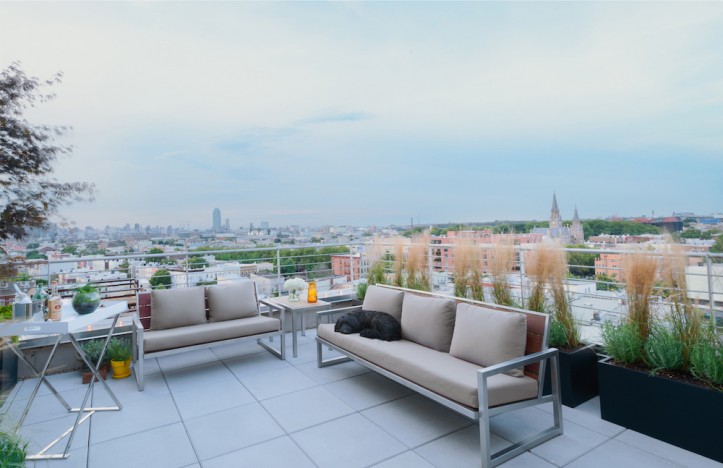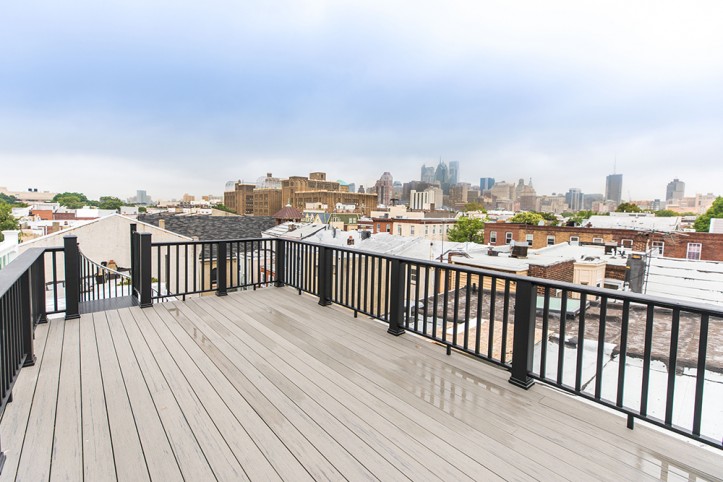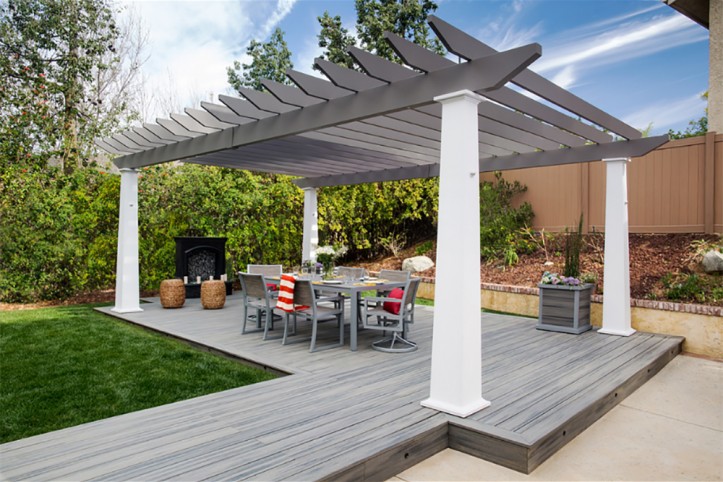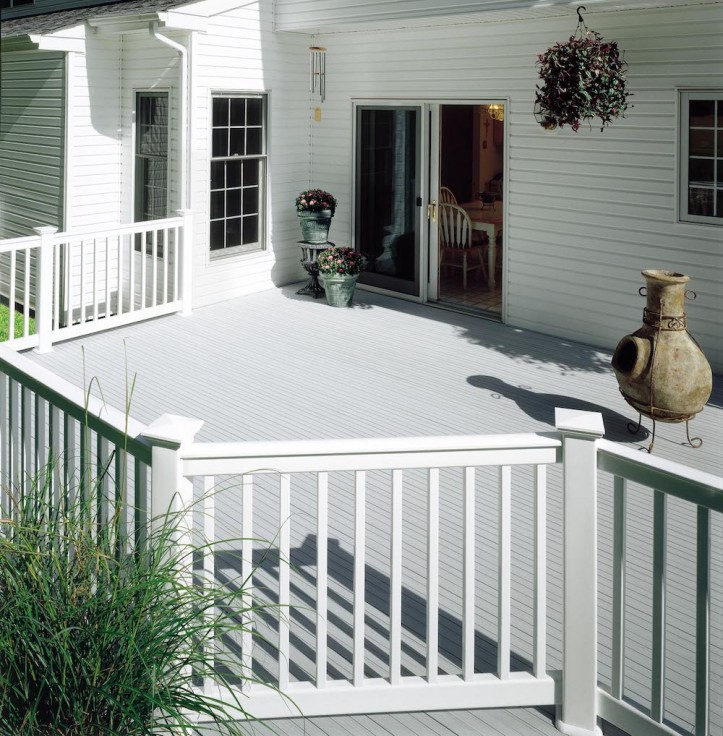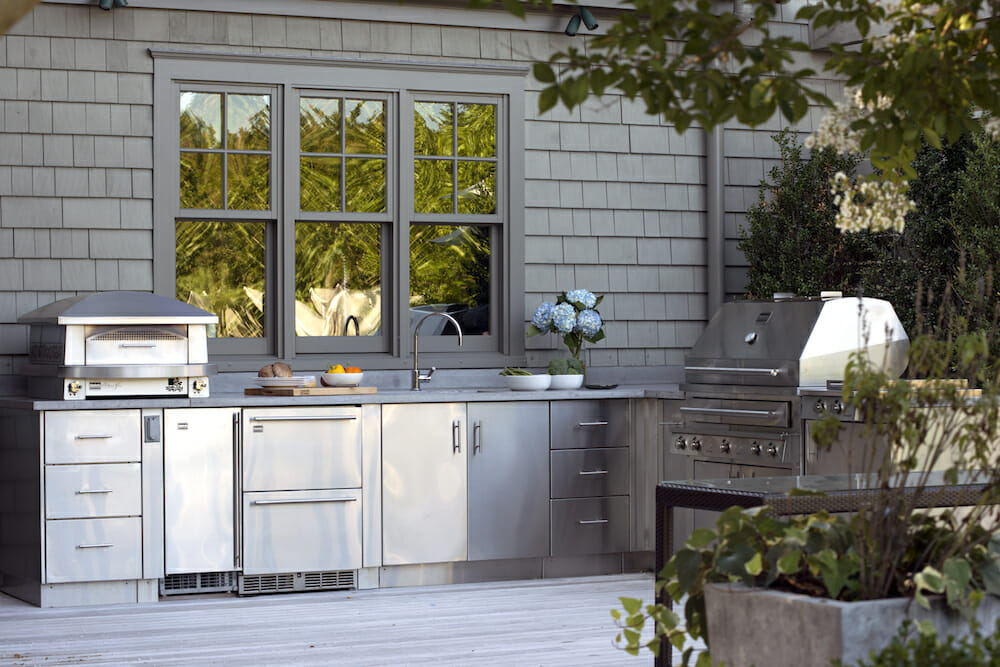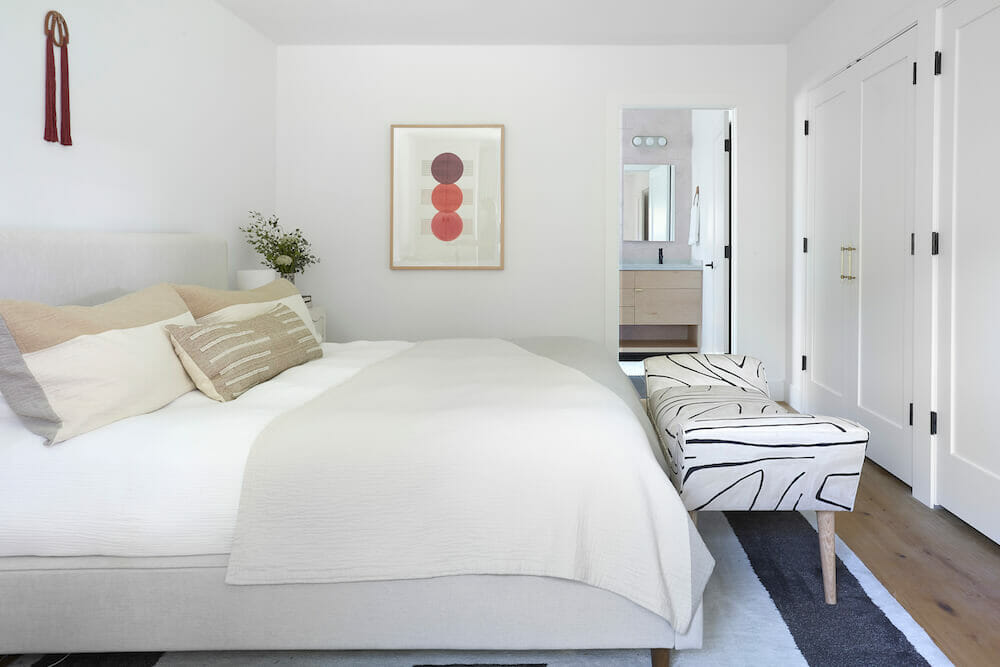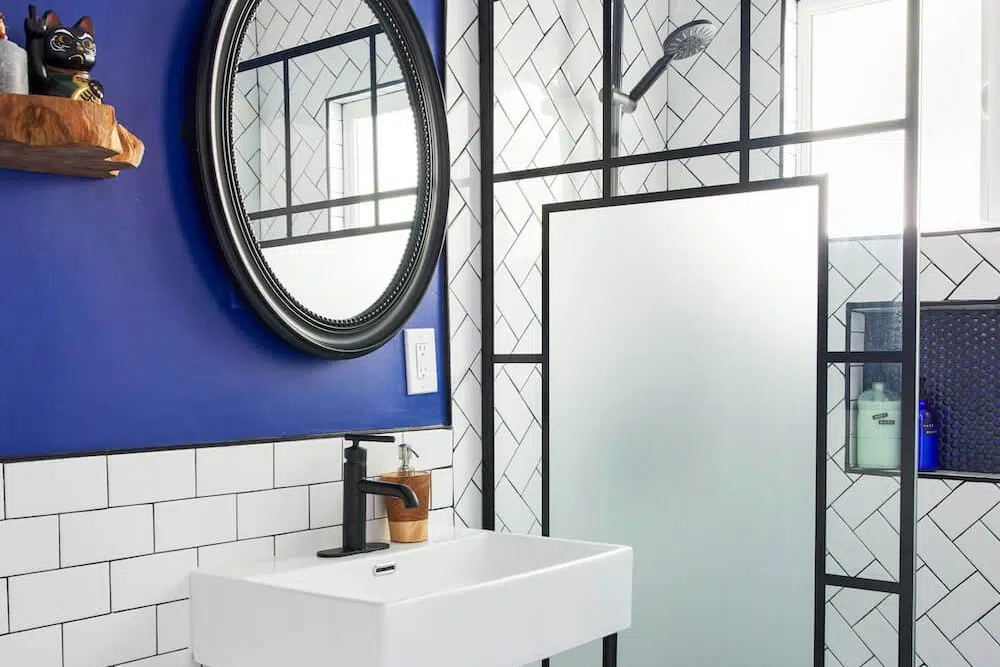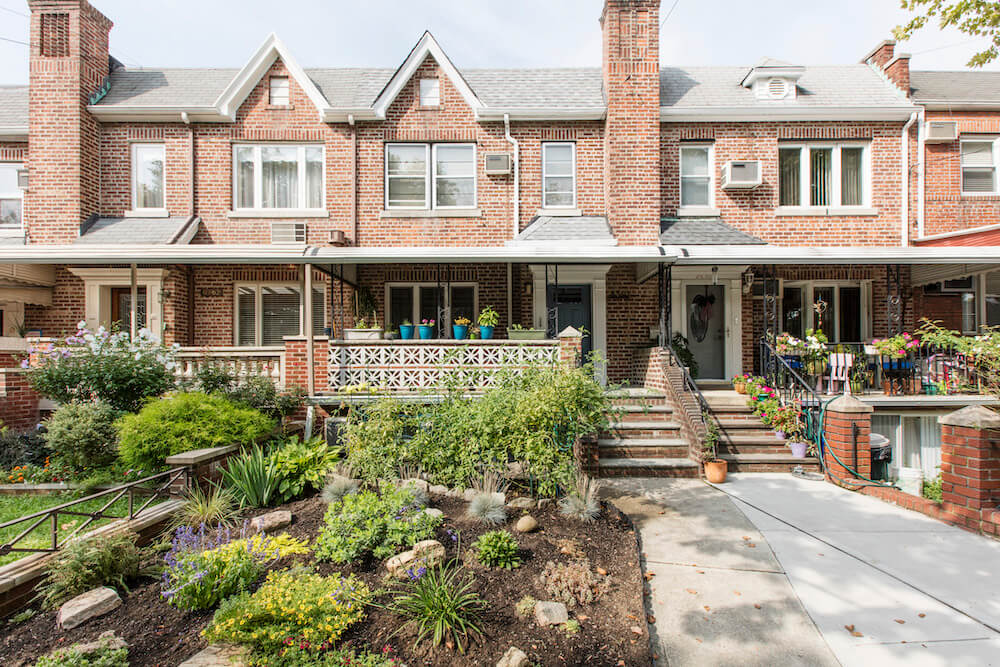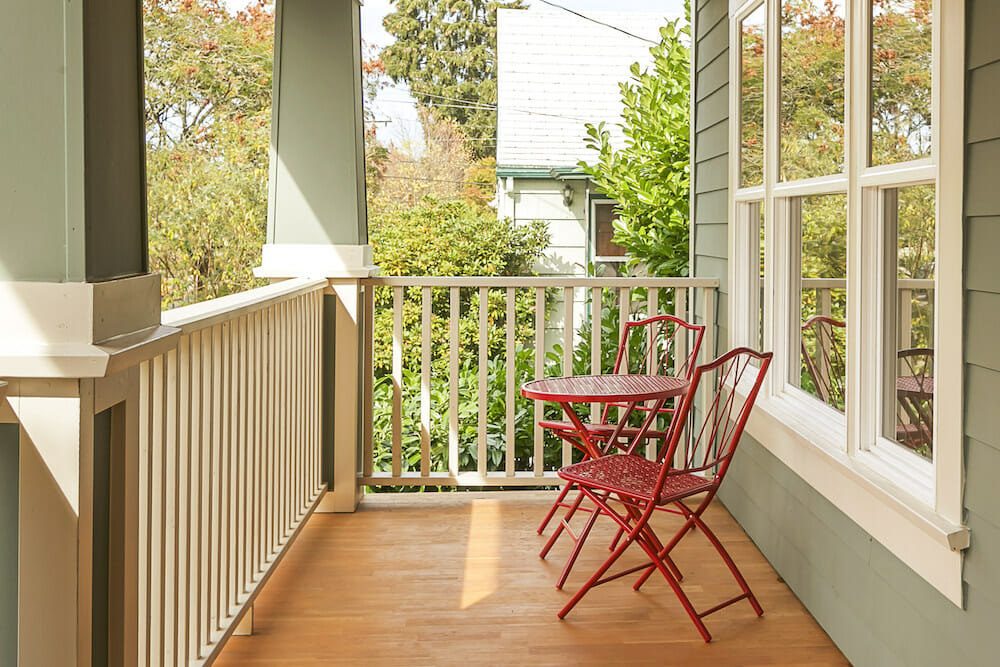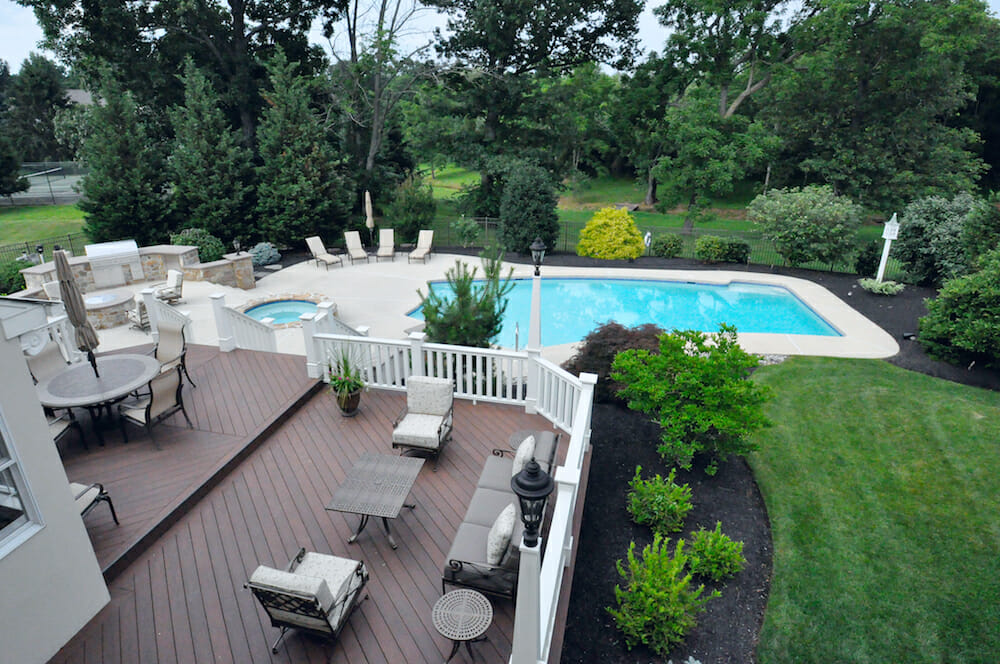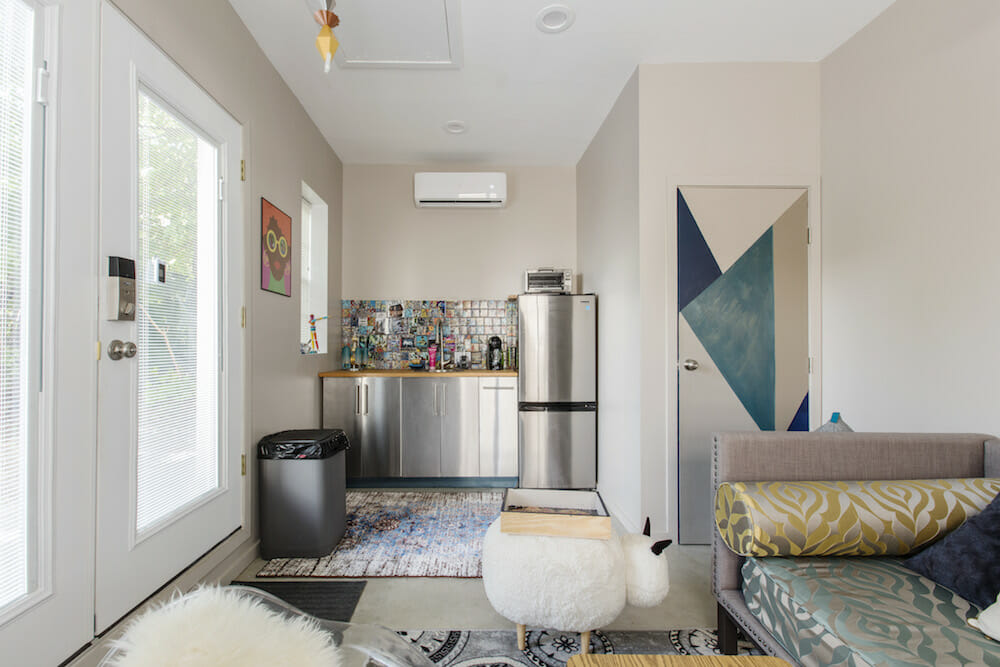Choosing Outdoor Deck Materials? Here’s Where to Start.
Understanding outdoor deck materials including types, local codes, and foundations
(Above) Sweeten homeowner Michelle and Nate’s deck renovation in Greenpoint, Brooklyn
Serving as either an open gathering place or a cozy retreat, the deck has become a popular alternative to the patio and porch. Outdoor deck materials have improved in durability and beauty, with a range of types to choose from. Rather than choosing based on looks alone, it’s useful to know the pros and cons of the most common material options available.
Sweeten matches home renovation projects with vetted general contractors, offering guidance, tools, and support—for free.
Importance of the deck’s foundation
No matter how you design it or outfit it with planters and pergolas, at its essence the deck is a large outdoor platform. Typically, it is connected to the house, and raised from the ground anywhere from a few inches to several feet. This is in contrast to a patio, which is made of stone or concrete and set into the earth.
Though made from moisture-resistant or repellent material, decks should be isolated from the ground by supports set into concrete footers. Contact with soil will eventually rot any kind of wood.
Decking boards come in specially milled or manufactured sizes that are typically 2-by-4s, though widths can vary from a given manufacturer to provide you with more design options. Look for rounded edges that resist splintering.
You will find many choices for joining systems. Some systems conceal screw heads, for a cleaner appearance and and to keep water from seeping into screw holes. Other systems are designed to allow expansion and contraction of the boards. “Decking boards with slotted sides can be installed using a clip system, so you do not have to surface fasten the boards,” says Doug L. Mucher, Senior Marketing Manager for CertainTeed. “This provides a cleaner installation.”
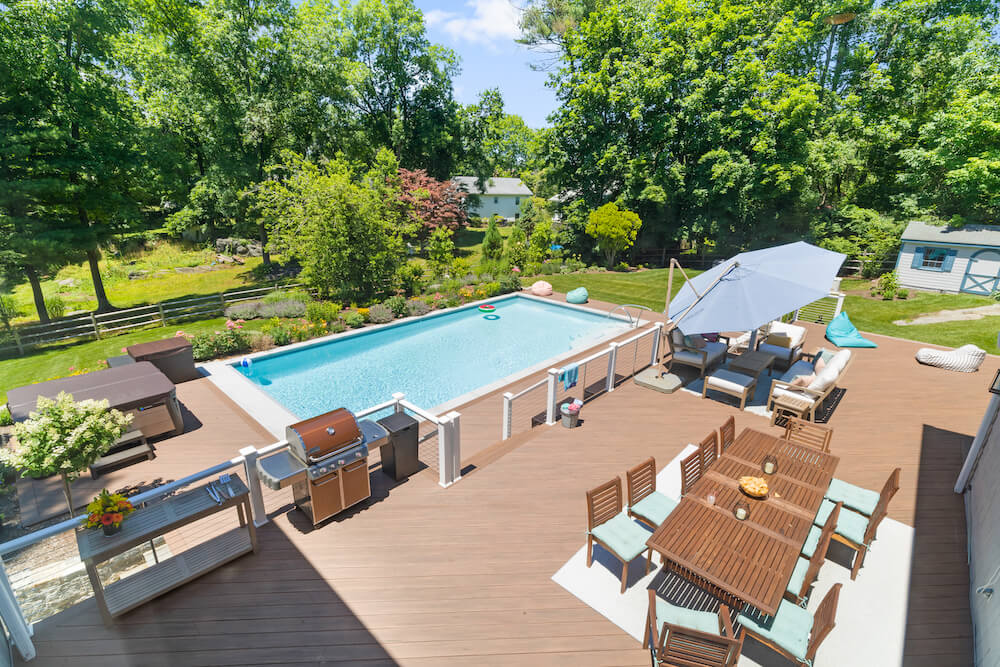
(Above) Designer Shana Sandberg worked with her Sweeten contractor to build a two-level deck
Zoning and local codes for outdoor decks
To ensure your deck is in compliance, deck supports are best installed by an experienced contractor who knows the local codes and zoning laws. Some cities or counties require approval from the planning commission and inspections during the building process. Keep in mind: these rules might limit your grand plans, or require some creative adaptations. It’s wise to consult with your contractor before proceeding with the build. “Most homeowners can handle replacing the deck surface,” says Mucher. “However, if the project requires the deck substructure to be built as well, you’ll most likely want to hire a contractor. A contractor can be required to make sure it is built to code.”
How to choose outdoor deck materials
Your choice of outdoor deck materials will be driven by your lifestyle, taste, and local climate. Does your area get a lot of rain and humidity? Heat and sun? Most modern deck materials can withstand any climate, but some require more upkeep than others to stay in good shape and appearance, especially in harsher climates.
(Above) Sweeten homeowner Nel’s roof deck renovation in Philadelphia
Different types of outdoor deck materials
Wood continues to be a popular choice. If you like classic materials, you can choose from a range of softwoods and hardwoods. You’ll get good-to-great performance, as long as you follow a regular maintenance routine. There are some synthetic alternatives, too. Consider the following:
Pressure-treated pine hardwood
PRO: This is an inexpensive softwood that’s been impregnated with chemical preservatives, making it more resistant to insects and to splitting, swelling, and rot from humidity than other woods. It’s easy to paint. It’s also strong, and well-suited to the structural parts of the deck, even if you choose different woods for the deck surface and other visible elements. Pressure-treated pine is the thriftiest option, so it’s good for homeowners on a strict budget.
CON: It is a natural material and requires frequent maintenance to assure top performance. Pressure-treated pine is not as attractive as some other popular wood options, including cedar or redwood. As with all real wood, it can splinter. Upkeep includes deep cleaning and application of a lumber preservative annually as well as occasional sanding. The chemicals used in the pressure treatment are toxic. This isn’t typically a problem in an outdoor setting, but some homeowners prefer to keep this treated wood in places like the deck’s support structure, where they won’t have to come in direct contact with it. Sweeten brings homeowners an exceptional renovation experience by personally matching trusted general contractors to your project, while offering expert guidance and support—at no cost to you. Renovate expertly with Sweeten
COST: From $1.50 per square foot.
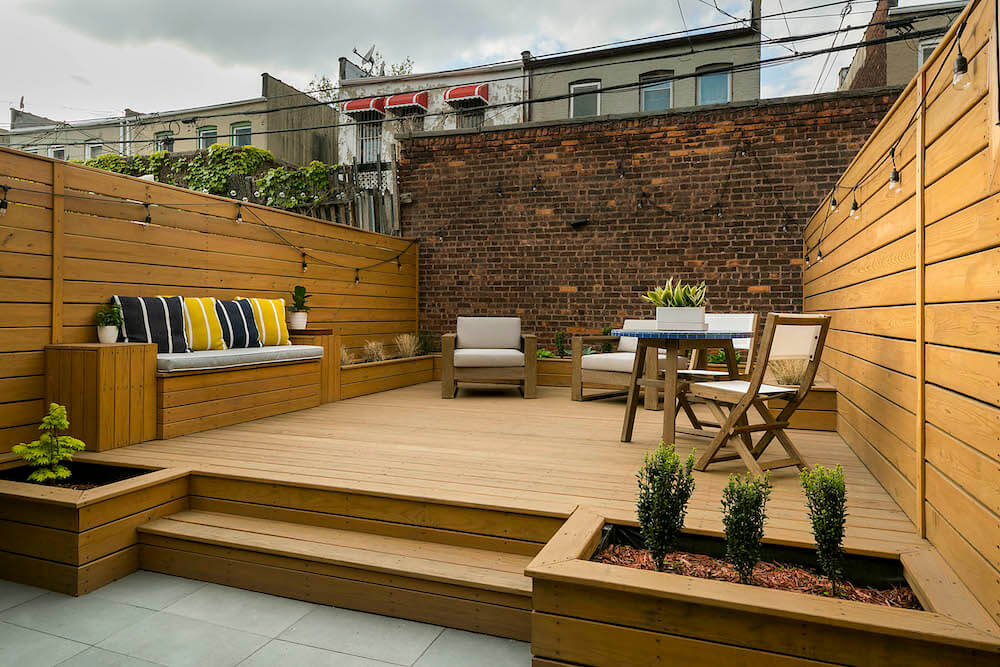
(Above) Sweeten homeowner Jessica’s elevated backyard deck renovation
Non-treated wood
PRO: There’s a reason why many synthetic decking materials simulate the look of wood. There is nothing like this natural material for its warmth and expression of quality. The most popular softwood species are cedar and redwood, for their good looks and natural moisture resistance. Natural tannins and oils resist insects well, and these woods are easy to stain, paint, and seal. Some decks are built with tropical hardwoods, such as ipe, which are incredibly resilient, and in some cases are accepted by fire codes that otherwise require concrete.
CON: Even hardwoods are not as long-lasting as plastics. Wood can dent, split, splinter, fade, and require frequent upkeep to maintain the best appearance and life. You will need to not only wash with a wood cleaner or pressure-washer, but also seal it at least once annually. Best to sweep daily or weekly to avoid damage from gritty dirt. Darker shades will heat up in sunlight, making them unpleasant underfoot in the summer when you are likely to spend the most time there.
COST: From $4 per square foot for cedar; from $6 per square foot for redwood, $8 per square foot for ipe.
Composite
PRO: Made from wood fibers bound by a resin, synthetic decking is nearly maintenance-free. It will not warp, splinter, or rot, and it repels insects. It requires no stain or sealing and offers a wide selection of simulated wood looks and colors. It also can be molded and so lends itself to curved shapes. It requires little care except cleaning with soapy water and a soft-bristle brush.
CON: Surfaces in darker colors can become hot in the sun and may fade over time. It can melt if exposed to high heat, such as from a grill. Scratches can’t be buffed out, and dropped greasy foods might leave stains. It will not break down in a landfill.
COST: From $5 per square foot.
PVC
PRO: PVC (polyvinyl chloride) is a thermoplastic that can be shaped and formed into a variety of products including decking. A particularly hard plastic, it won’t scratch, warp, rot, split, or stain; it’s lightweight and easy to install and requires no annual treatments other than cleaning with soap and water.
CON: More limited palette than composite. It will not break down in a landfill.
COST: From $4 per square foot.
Vinyl
PRO: Lightweight vinyl is comprised of PVC and polyethylene. Available in faux-wood styles and textures, this material is easy to install thanks to its light weight and ease of slicing with a saw. It never needs painting, resists staining and fading, and won’t heat up, unlike natural wood and some composites. Easy to clean with soap and water.
CON: Over time, it may sag. It will not break down in a landfill.
COST: From $3 per square foot.
How to personalize your outdoor deck
Once you’ve narrowed down your choice of material, you can think about ways to customize the deck. “With all the styles and colors available, homeowners are really only limited by their imagination,” says Mucher.
Outdoor deck design ideas:
- Mix different colors or shades of planks
- Combine different plank widths
- Run planks in different directions to create a pattern, like a herringbone or a fan
- Add a contrasting border
- Paint on a stenciled motif
Make the deck resemble an actual room:
- Create steps and two or more levels for different activities, such as relaxing, dining, taking in the view
- Install an outdoor kitchen, chiminea (freestanding, front-loading fireplace or oven), or spa
- Incorporate a pergola or a lanai
- Include lighting, for use at night or to highlight an area
Finally, most decks, particularly those that are raised or tiered, include a railing. You can match your deck material or choose a complementary style or finish. Work with your contractor to make sure all the necessary elements are incorporated, for safety and security as well as environment and maintenance.
Invest time in planning and selecting a vetted general contractor to guide you through the process. You want your deck to be dependable and a space you enjoy sharing with family and guests.
—
Sweeten handpicks the best general contractors to match each project’s location, budget, and scope, helping until project completion. Follow the blog for renovation ideas and inspiration and when you’re ready to renovate, start your renovation on Sweeten.
